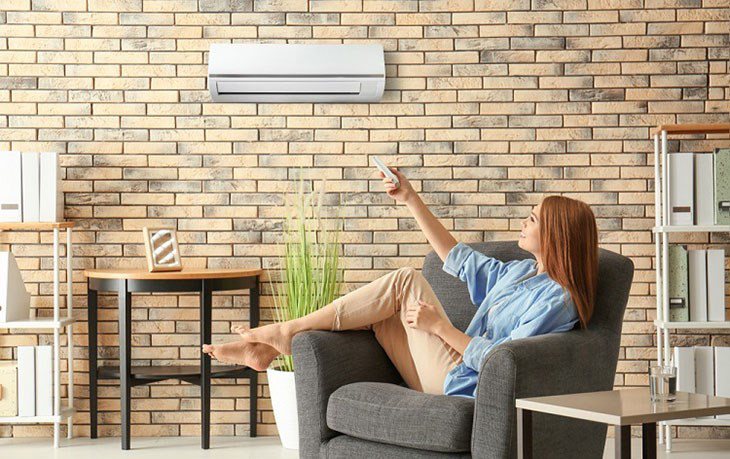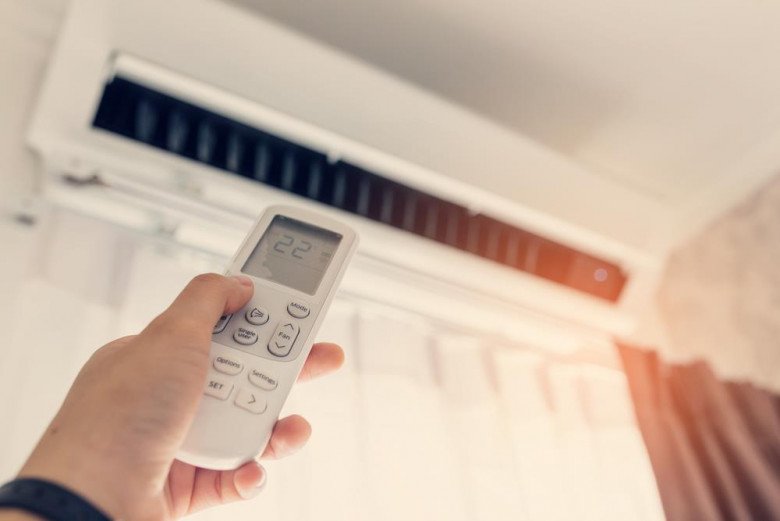1. Right-sizing Your AC is Key to Efficient Cooling
To effectively cool a house, an air conditioner’s capacity must match the room’s area. If the AC’s capacity is insufficient for the space, it will struggle to cool the air, overloading the system. To reach the desired temperature, the unit will run at maximum capacity continuously, leading to soaring energy bills.
However, opting for an oversized AC unit for your space is also wasteful in terms of energy consumption and initial investment.

2. Maintaining a Constant Temperature All Day Doesn’t Equate to Energy Savings
Contrary to popular belief, keeping your AC running at a constant temperature throughout the day is not energy-efficient. The sweet spot for energy efficiency is a 6–10°C difference between indoor and outdoor temperatures.
As daytime and nighttime temperatures vary, adjust your AC settings accordingly for optimal energy efficiency and health benefits.
3. Turning Off Your AC When Leaving Home Saves Energy, Right?
This is true if you’re away for an extended period. However, if you’re stepping out for 30 minutes to an hour, it’s more energy-intensive to turn off the AC and restart it later. This is because the compressor has to work harder during startup, consuming more energy.
4. Cranking the Temperature Down Cools the Room Faster
A common misconception is that setting the temperature lower will cool the room faster. In reality, the AC will blow air at the same cold temperature whether it’s set to 16°C or 20°C.
The temperature setting on the thermostat is a threshold for the AC to recognize when to reduce its cooling intensity, not the actual temperature of the air it blows. Specifically, when set to 20°C, the AC aims to reach and maintain that temperature, reducing airflow once it’s cool enough.
The only difference lies in the intensity and output, depending on the set target. Forcing the AC to run at maximum capacity at 16°C without adjusting it can lead to an overly cold system, reduced efficiency, higher energy bills, and shortened equipment lifespan.

5. Seal the Deal: Keep the Room Sealed for Maximum Cooling
While it’s essential to keep the room closed for effective cooling, sealing it too tightly for too long can lead to a buildup of CO2 and respiratory issues. Therefore, after running the AC for 1–2 hours, it’s advisable to open the windows for 10–15 minutes or install a ventilation fan to refresh the indoor air.
Additionally, it’s recommended to turn on the AC for 10–15 minutes before sealing the room. This is because ACs can accumulate dust and bacteria, which are then blown out with the initial airflow. Sealing the room before turning on the AC can result in these contaminants lingering indoors, posing health risks.
6. Inverter ACs: The Ultimate Energy-Saving Solution?
Inverter ACs, with their variable-frequency technology, are marketed as energy-saving superstars, promising 30–60% energy savings. While Inverter technology is superior, the advertised energy savings are often exaggerated, especially in the context of typical usage patterns in Vietnam.
Inverter ACs are most energy-efficient when operated continuously for extended periods (over 8 hours). Additionally, their energy-saving capabilities are diminished or even reversed on extremely hot days, in poorly insulated rooms, or when the unit has to run at full capacity continuously.
7. Clean AC, Clean Air: No Need for Air Filter Replacements
While regular AC cleaning can reduce indoor dust levels, it doesn’t eliminate the need for air filter replacements. Air filters are designed to trap particles like dust, pollen, pet dander, and other pollutants, preventing their circulation in the air. Therefore, it’s crucial to clean the filters every two weeks and replace them every three to four months.

8. AC Overuse: A One-Way Ticket to Summer Sickness
Viruses, not AC temperatures, are the primary cause of colds. However, improperly maintained ACs can contribute to health issues. For instance, dirty filters and blocked vents can become breeding grounds for bacteria and mold, leading to infections and colds.
Therefore, it’s essential to maintain both the internal and external components of your AC. Regular cleaning, avoiding drastic temperature differences between indoors and outdoors, and limiting prolonged exposure to conditioned air are key to staying healthy.
9. Hot Spot Solution: Install Your AC in the Hottest Area
A common misconception is that installing an AC unit in the hottest area of a room, even in a corner, will quickly cool the entire space. However, this approach only overloads the AC, leading to increased energy consumption.
Instead, opt for a central location with good airflow and a relatively cooler temperature for your AC installation.
10. AC Dry Air: A Humidifier to the Rescue
Placing a water basin in a room with an AC to increase humidity and prevent dry skin, lips, and respiratory issues is a common practice. However, doctors warn that this habit can be hazardous to your health, as the water attracts dust and disease-causing bacteria.
































